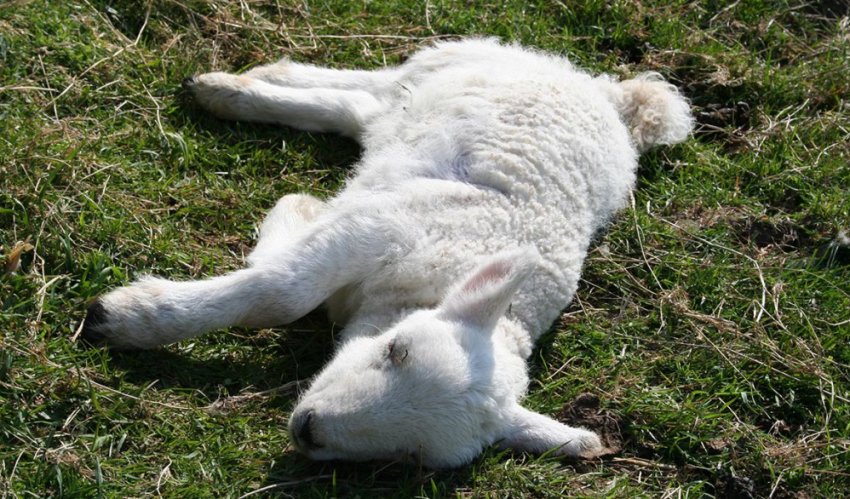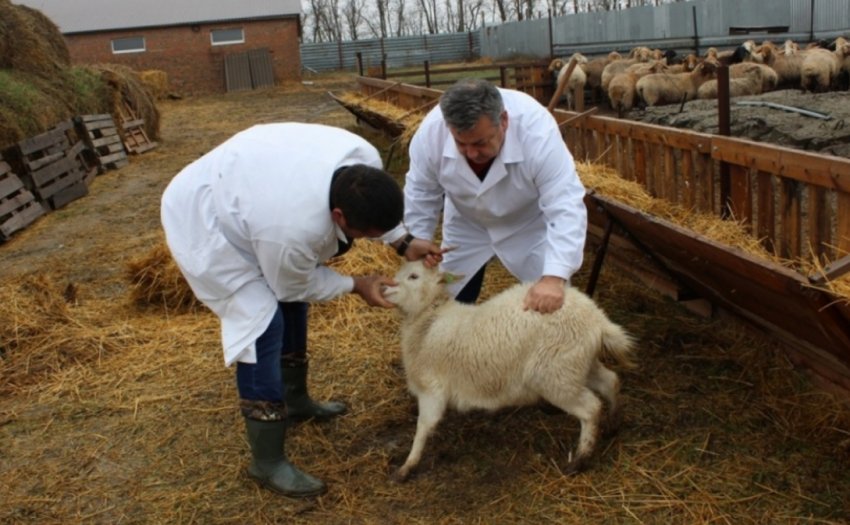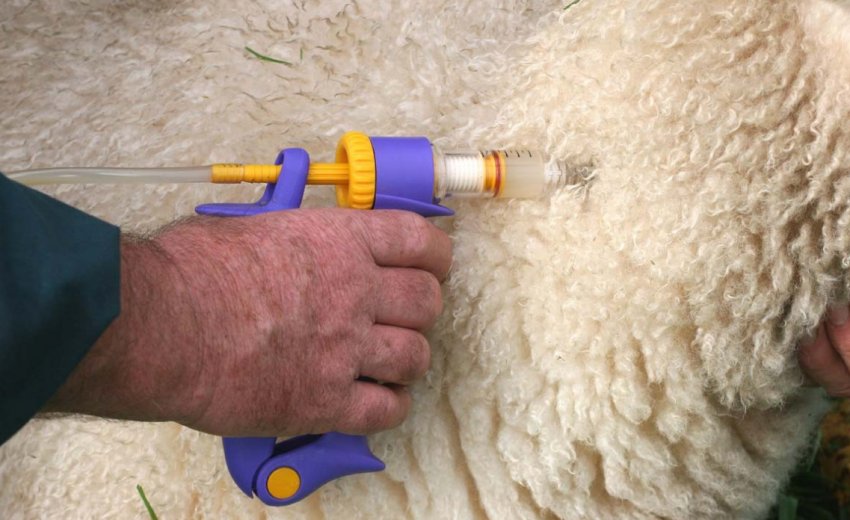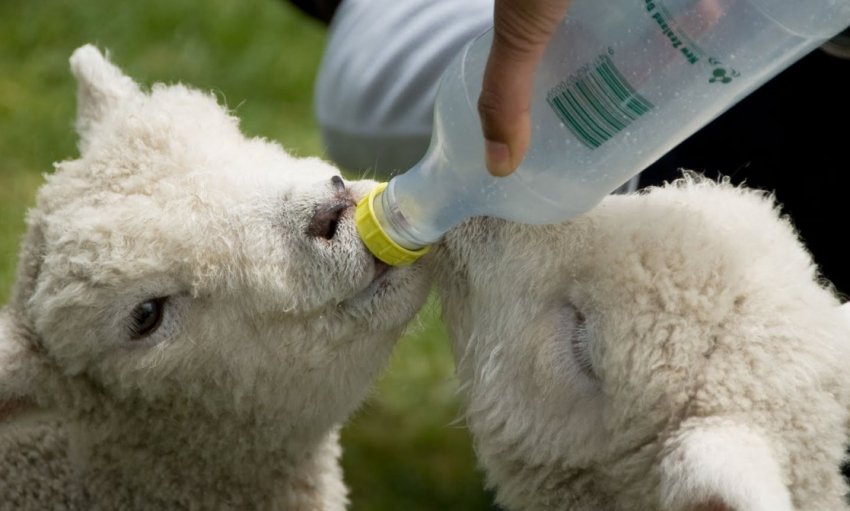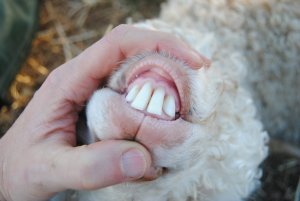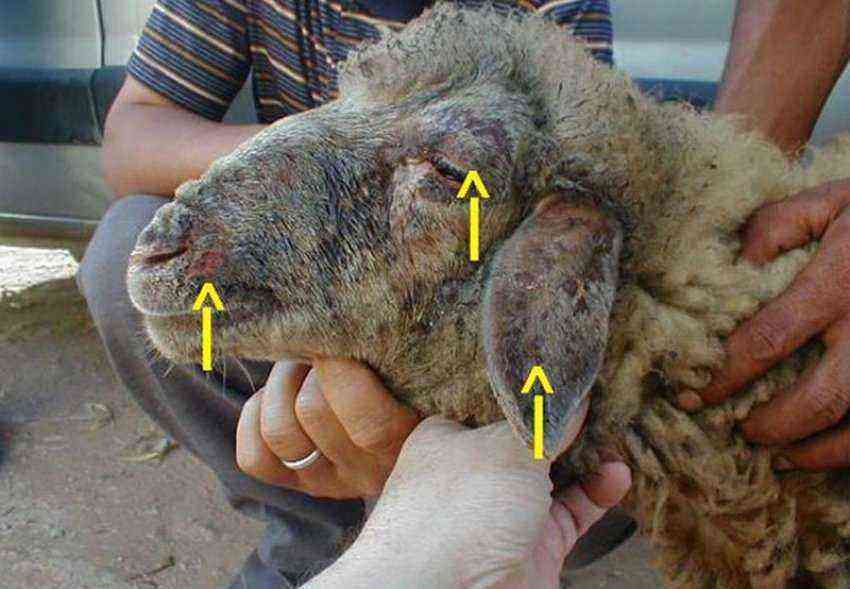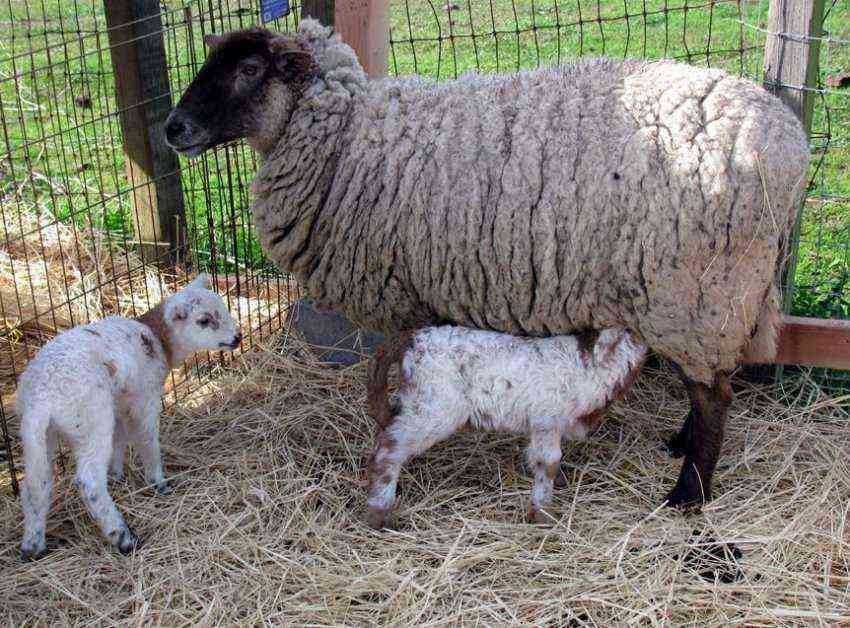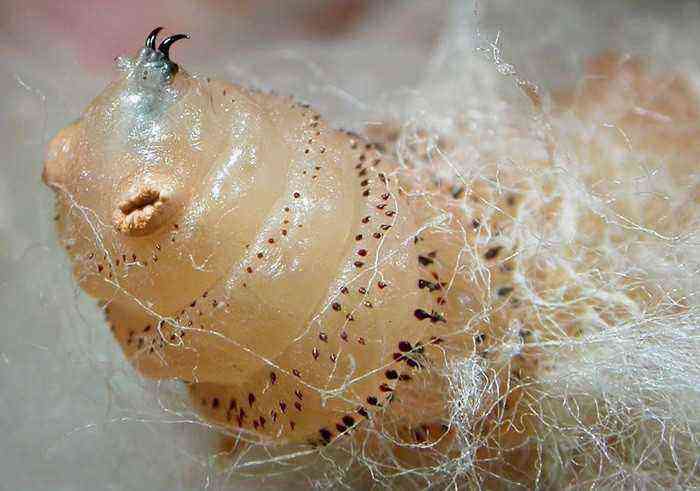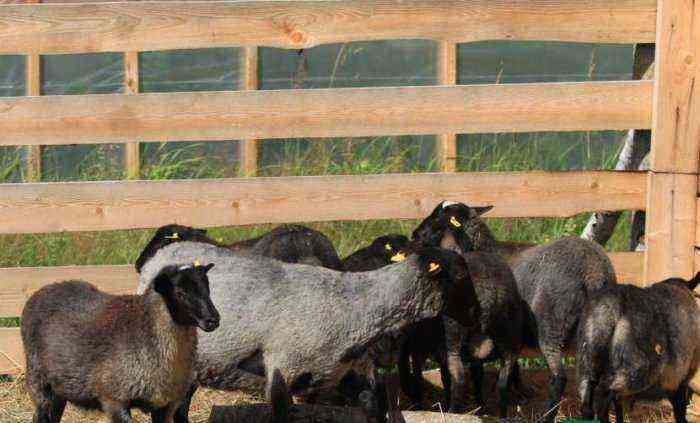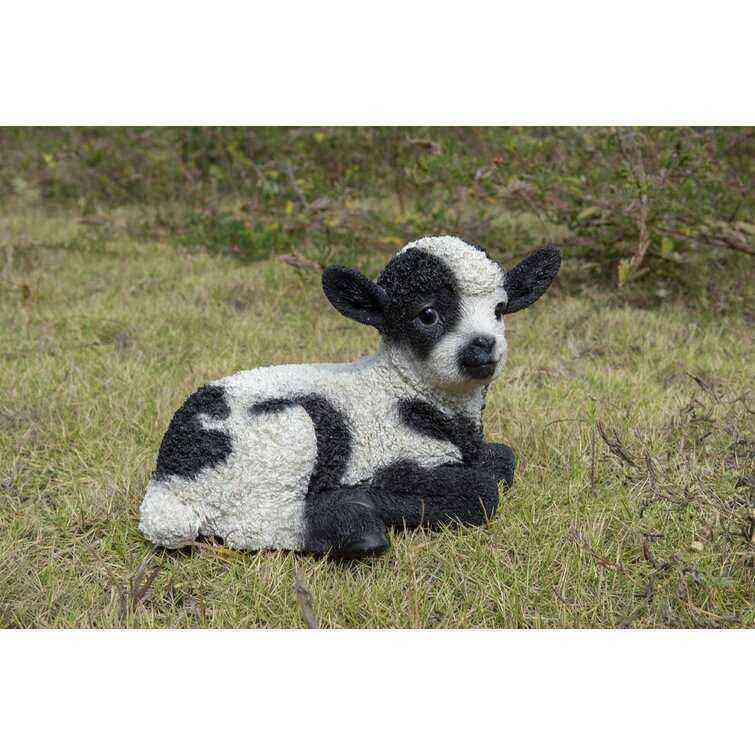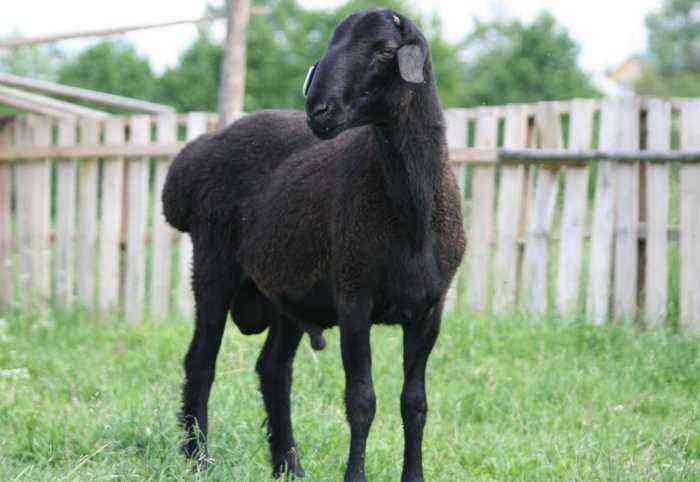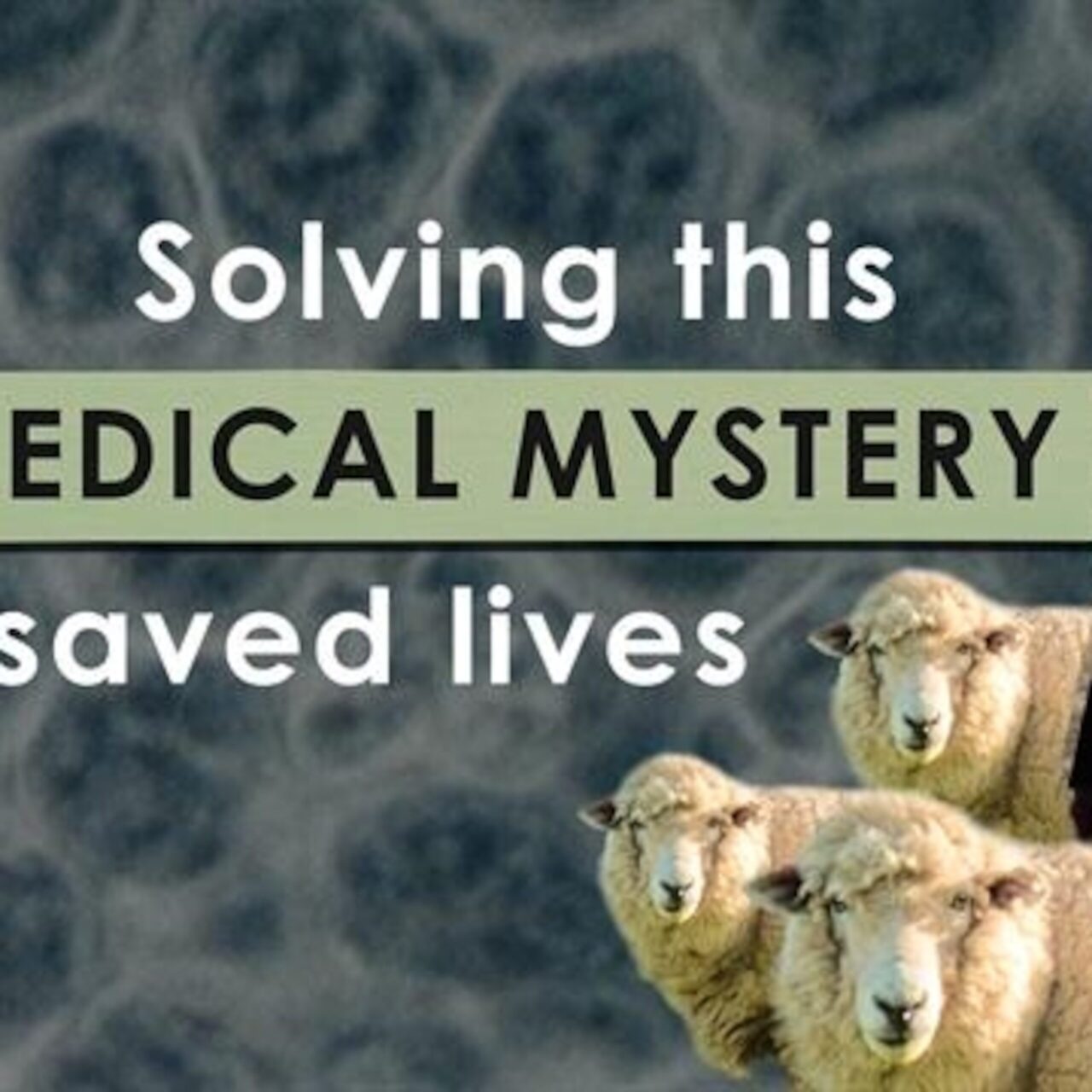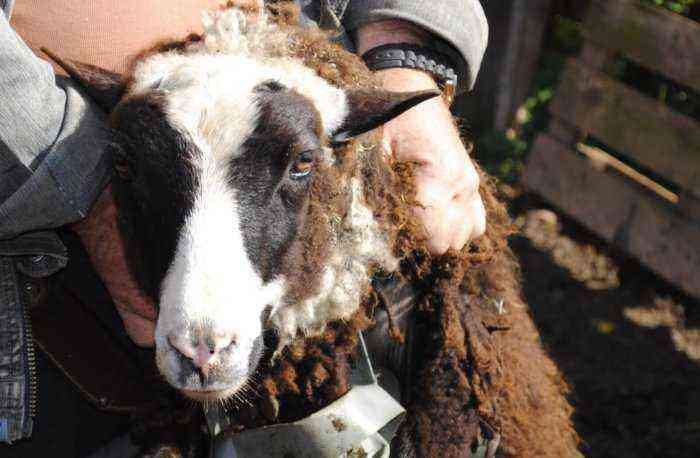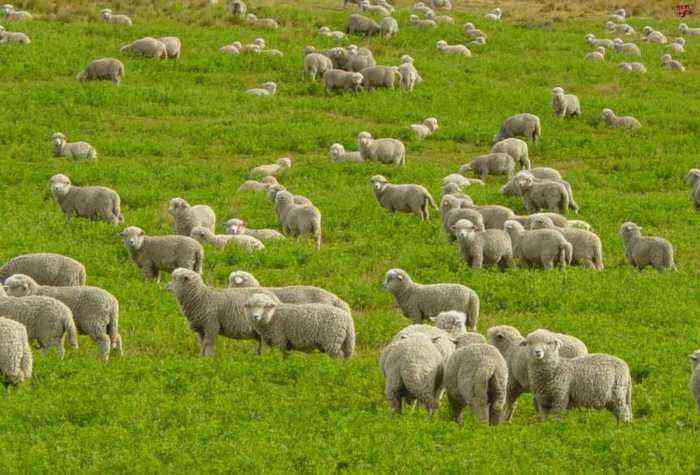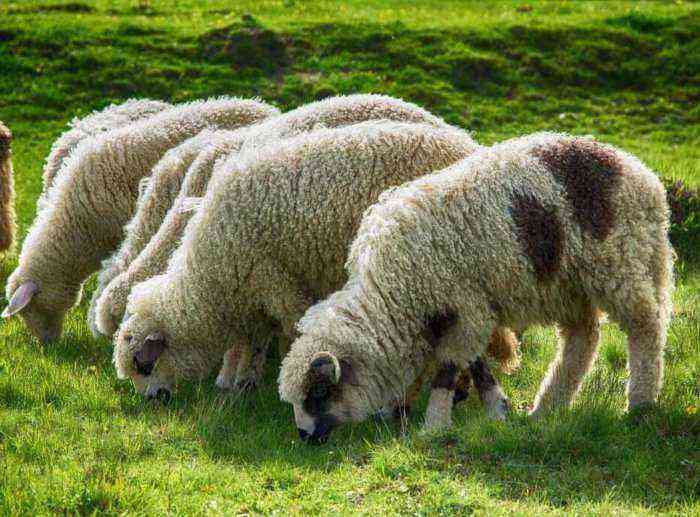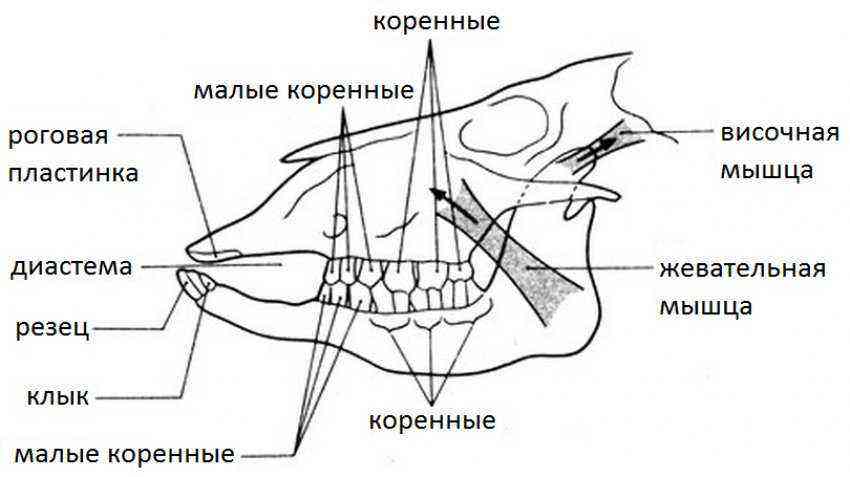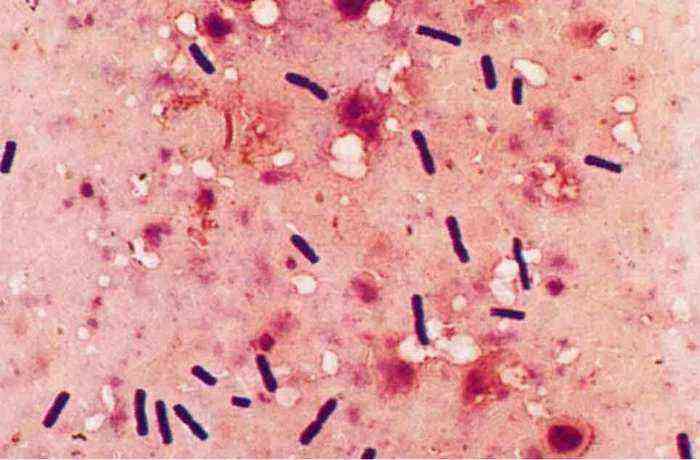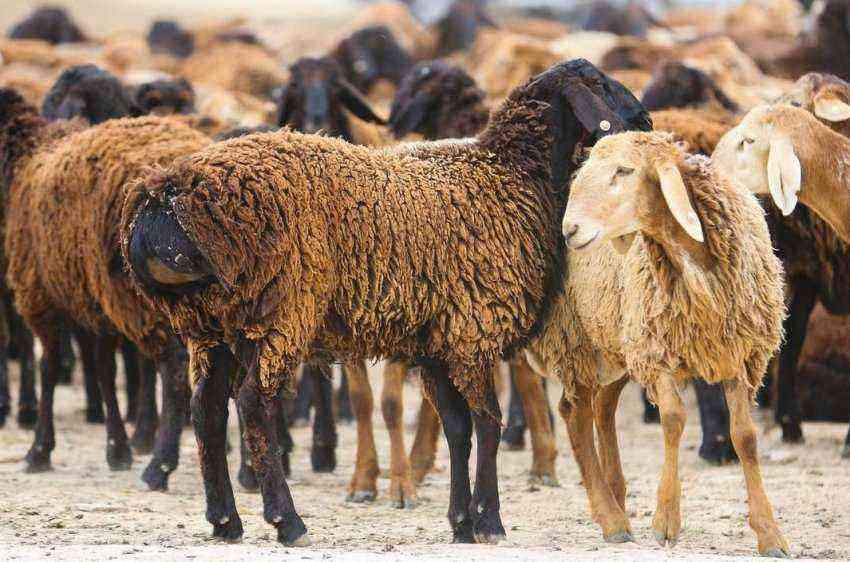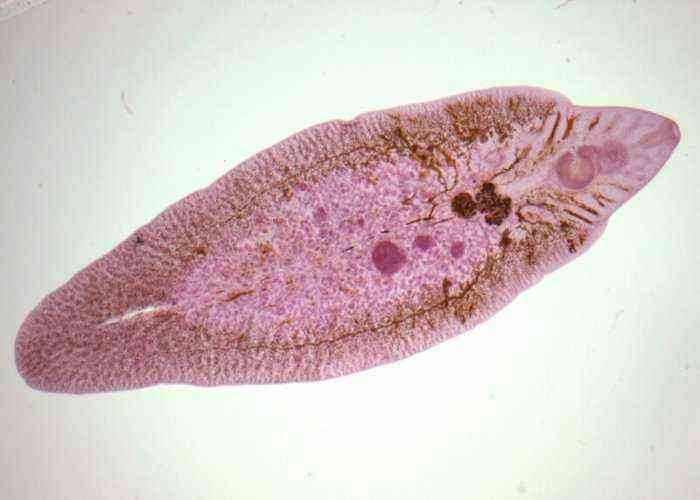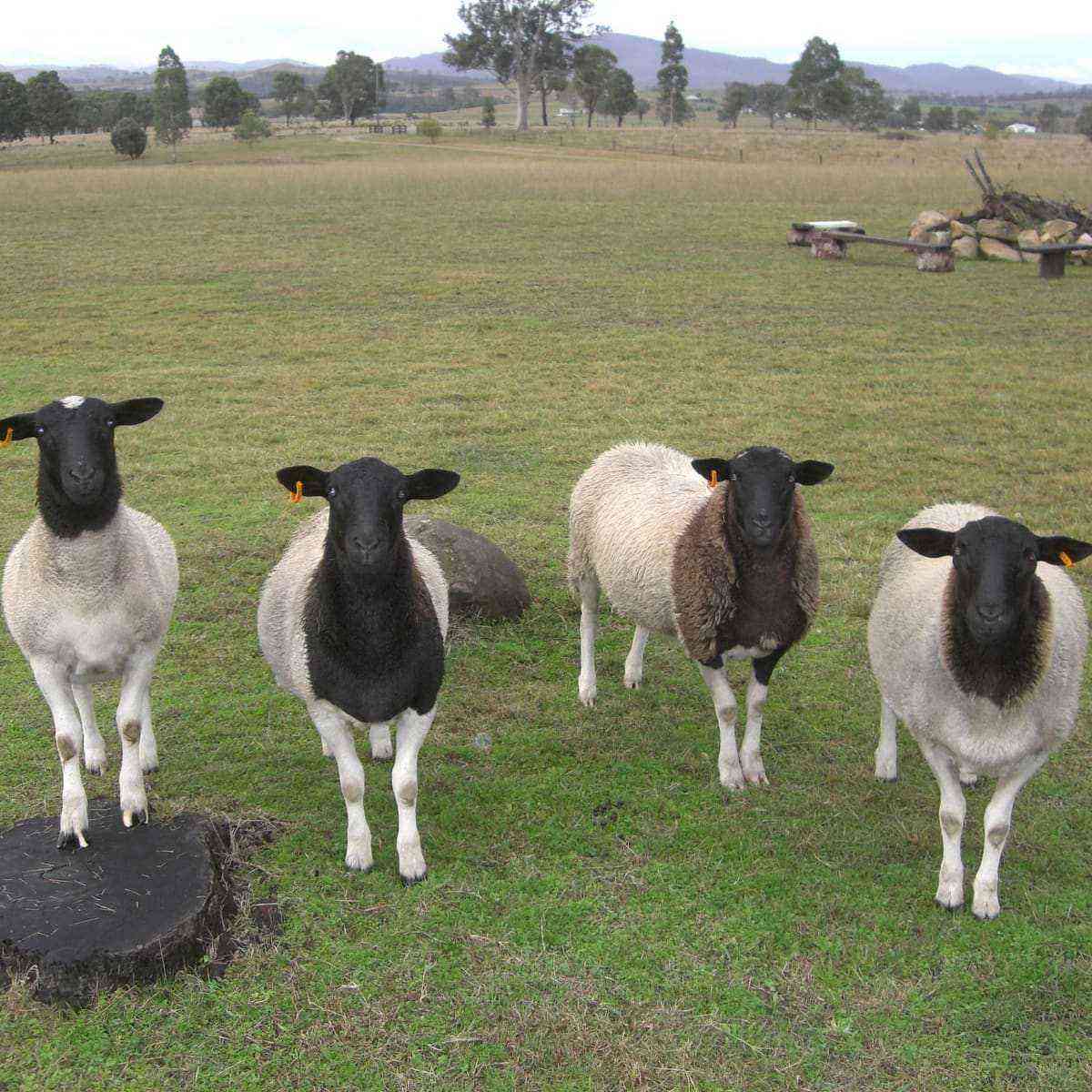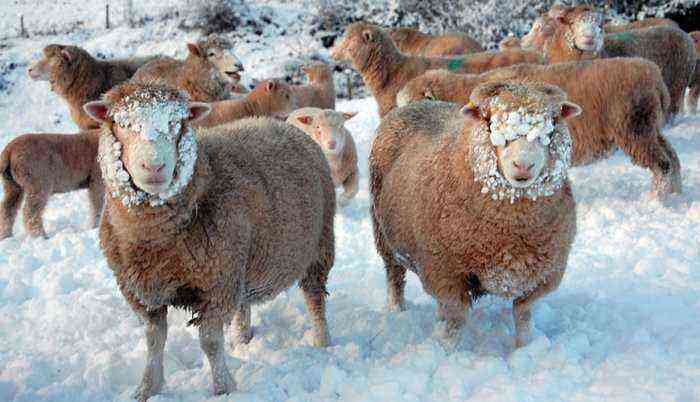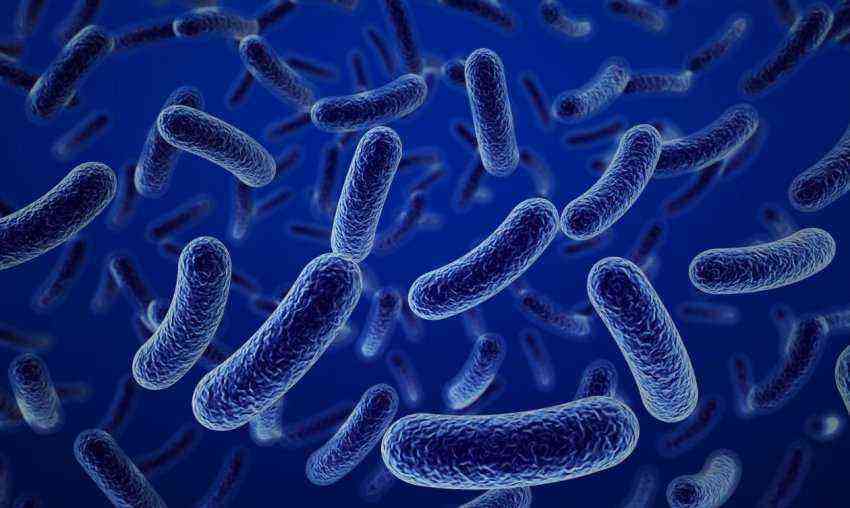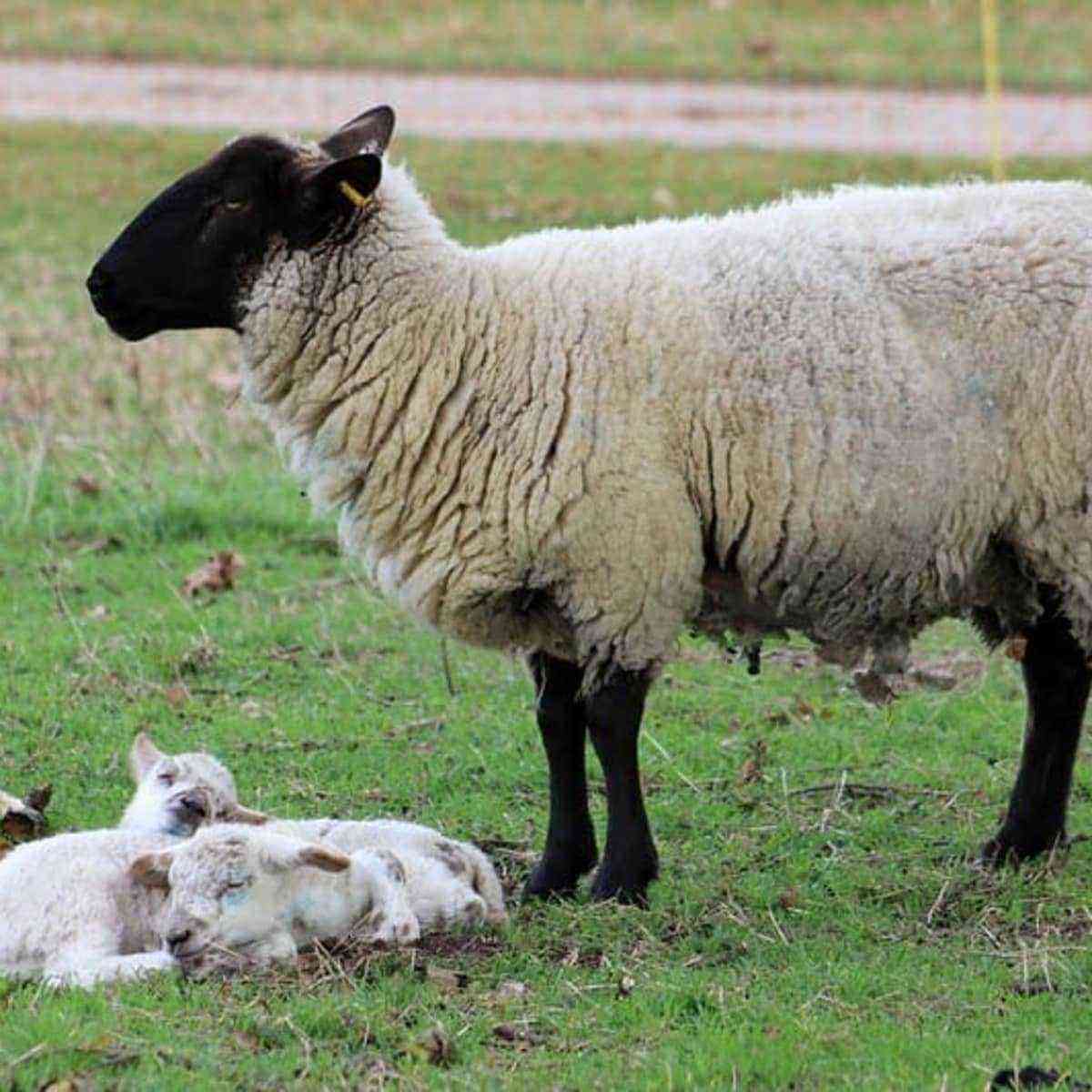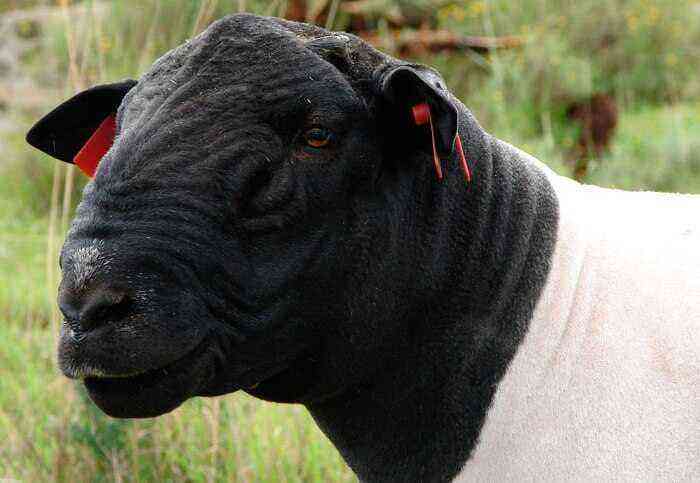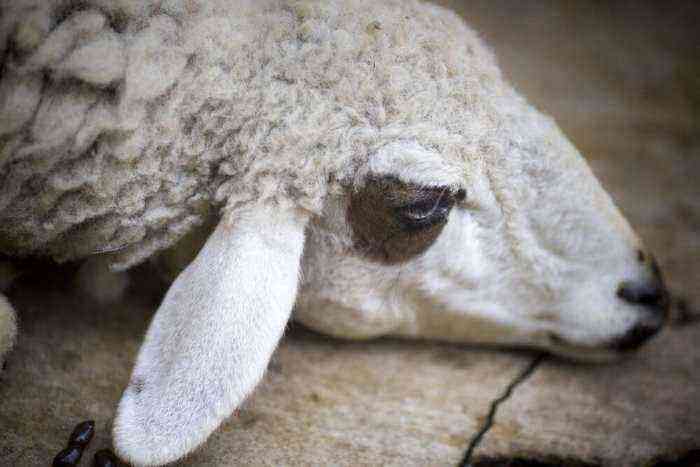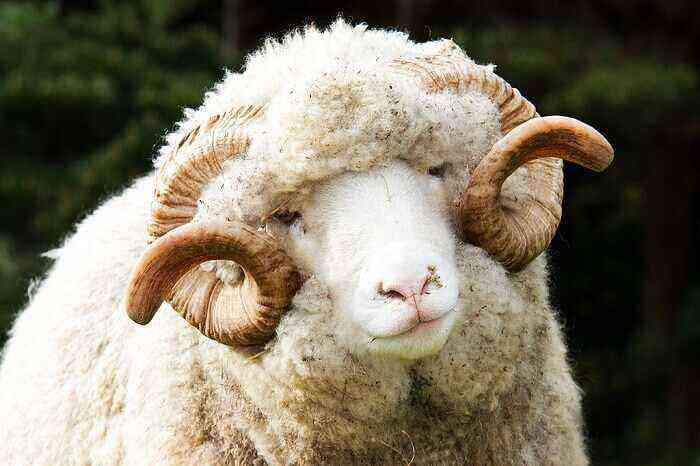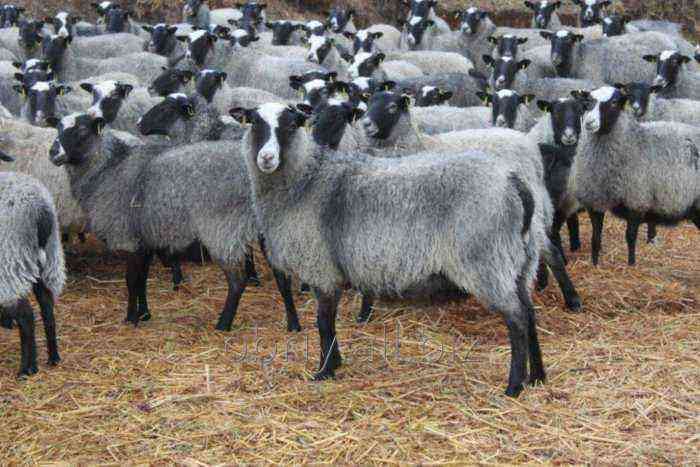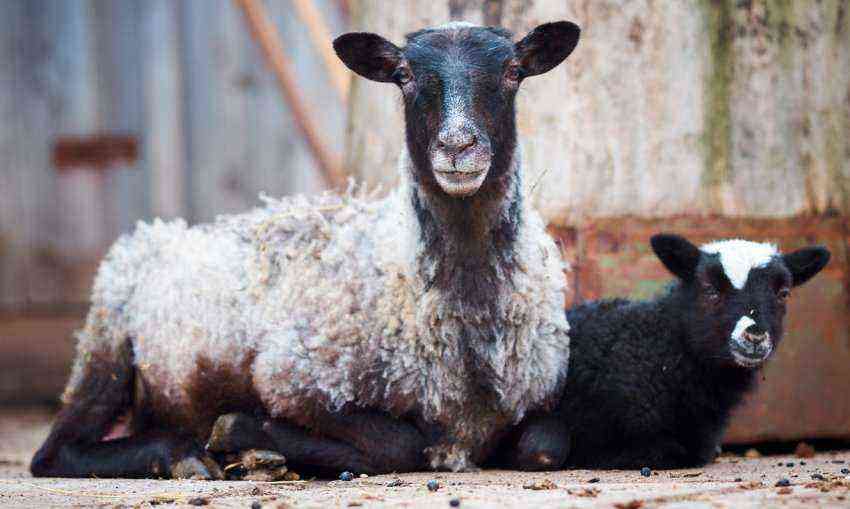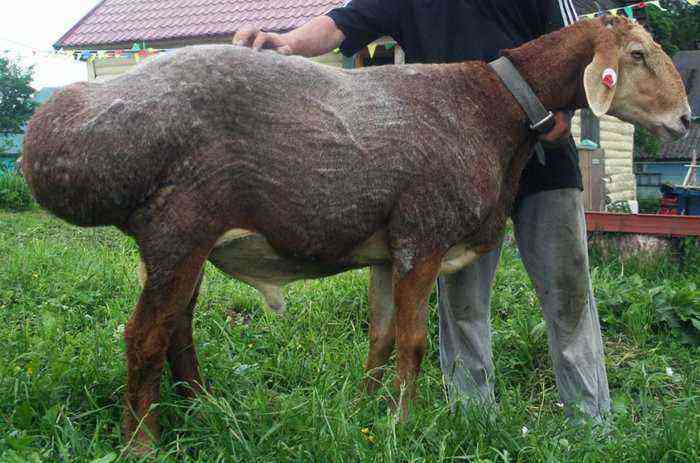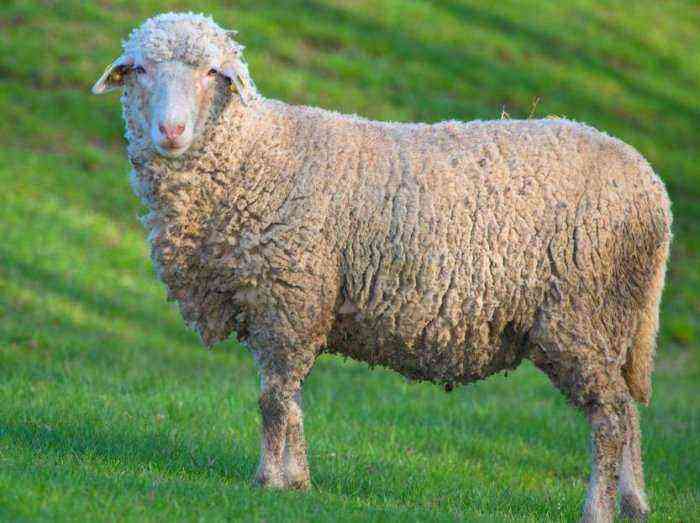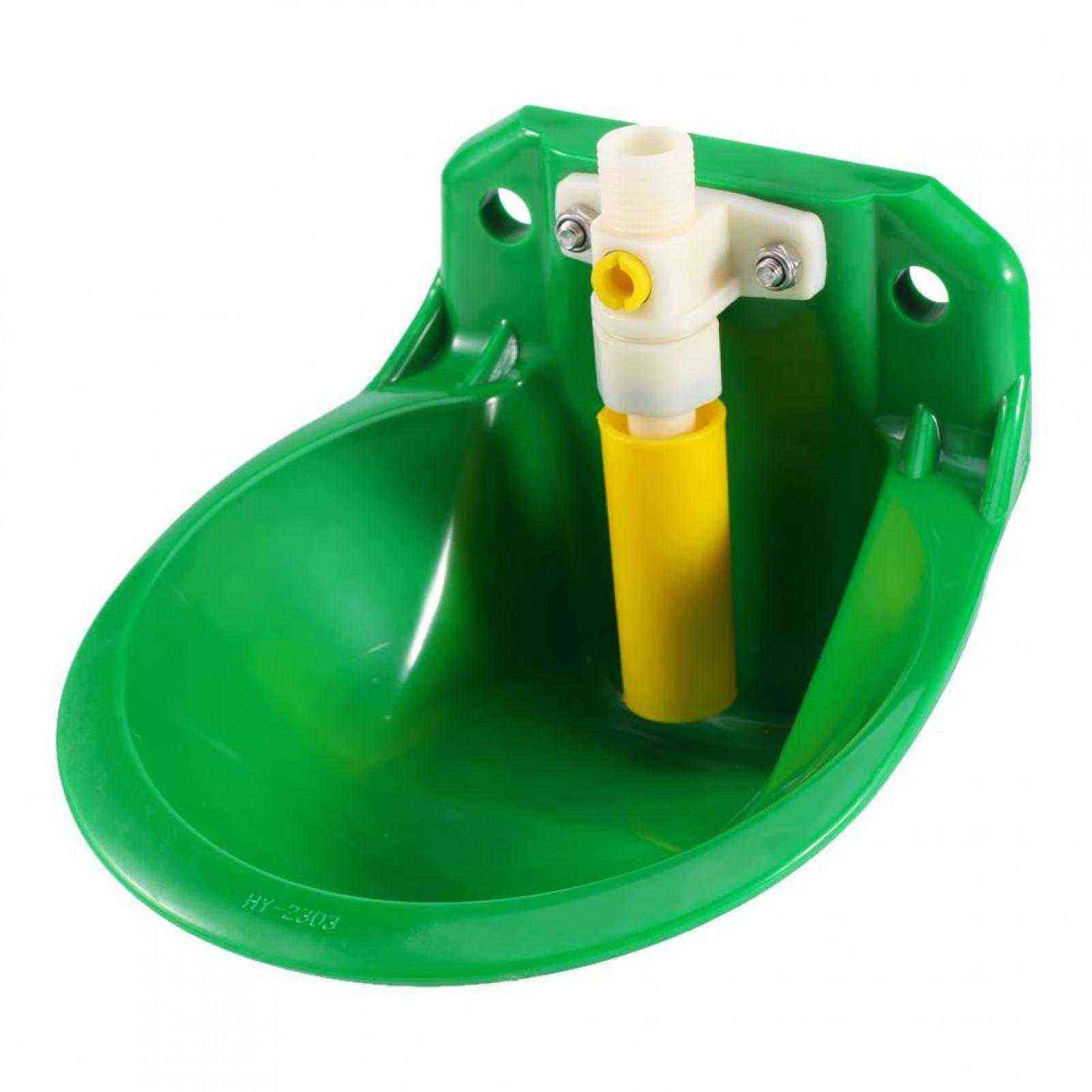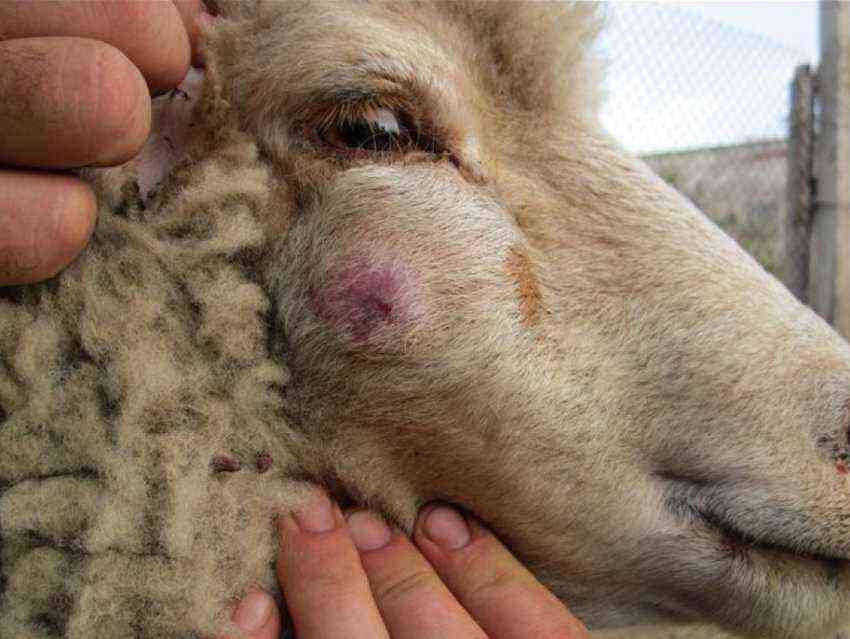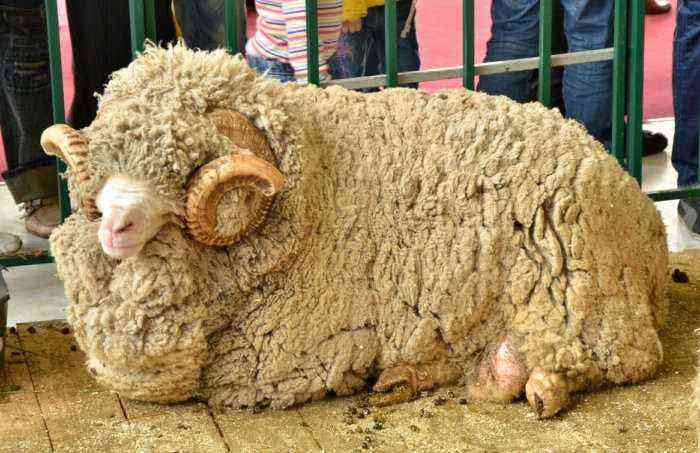Raising sheep is a profitable but rather troublesome business. If you have already decided to start sheep breeding, you should approach this very responsibly and, first of all, inquire about what diseases can harm animals. Diarrhea in sheep becomes a frequent ailment, which, if not treated in time, can even lead to death.
Diarrhea in sheep: diseases that cause diarrhea, symptoms, course of the disease
There are many diseases in sheep that can lead to digestive upset, diarrhea, and malaise. Sometimes even experienced sheep breeders do not immediately determine that something is wrong with the animal, but the timely detection of the disease and its immediate treatment often save animals from death.
Did you know? For the first time, anaerobic dysentery was identified and described as a disease called “mass diarrhea of lambs” at the end of the 1885th century (in XNUMX). During this period, a large-scale death of lambs was observed in Russia. — out of 100 newborns, 70 fell ill, and died 50 individuals.
Anaerobic dysentery
Anaerobic dysentery is an acute toxic infection that occurs in newborn lambs. The disease can be determined by such signs as diarrhea with rapid dehydration of the body, ulcerative enteritis (lesion of the mucous membrane of the small intestine), resulting in a rapid death of the animal.
The causative agent of infection is a toxic microorganism that has the ability to continue its vital activity even with heat treatments. For example, at a temperature of + 90 ° C, it lives for another 30 minutes, and it can withstand boiling for up to 10 minutes. It can remain in manure for 3-5 days.
Dysentery usually affects newborn lambs between 1 and 5 days of age, rapidly infecting large numbers of lambs.. It is transmitted through bedding, inventory and other items contaminated with the faeces of sick individuals. A lamb can become infected by sucking milk if there is infected manure on the udder of a sheep.
The occurrence of the disease is most often explained by the lack of preventive vaccination, as well as improper feeding during pregnancy (lack of proteins, carbohydrates, vitamins and minerals leads to weakness of the born individual), violation of the temperature regime (hypothermia).
Crowding in barns and poor living conditions can also provoke the appearance of dysentery. The disease can be hyperacute (lightning death), acute (lasting about 3 weeks) and less often chronic, as a result of which individuals recover very slowly, lag behind in development.
Enterotoxemia
The disease can be found in all countries where sheep are bred. This is a toxic infection that affects the nervous system and leads to the rapid death of the animal. Once in the intestine, the pathogen – a spore-forming anaerobe, begins to actively multiply, producing toxins that are absorbed into the blood.
The disease can be transmitted from sick animals to healthy ones, and also get into the body from pastures, where persistent pathogens persist for years. Outbreaks of the disease are observed in the spring.
The disease occurs in 3 forms. With a lightning current, the animal dies within 10-12 hours. In acute – the disease lasts about 1 day. The chronic form is observed in individuals with poor fatness, characterized by weakness, anemia, diarrhea, and a yellow tinge of the mucous membranes. With timely detection of the disease (up to 3-4 days), the animal can be saved.
With helminthiasis
Helminthiasis combines a large group of diseases (60% of all established ailments) that occur as a result of the ingestion and progression of parasitic worms of various species in the body of animals.
There are 3 main groups of diseases:
- Helminthiasis. Diseases caused by worms of the leaf-shaped flukes class: fascioliasis, paramphistomatosis, dicroceliasis. First of all, the bile ducts of the liver and intestines are attacked.
In sick individuals, weakness, anemia, emaciation, diarrhea, a yellow tint of the mucous membranes, and swelling of the eyelids are observed. Sometimes illness can last for months. They are transmitted through water, grass growing near water bodies. A disease such as dicroceliosis can be asymptomatic, and only in sheep older than 3 years there is progressive depletion, which often leads to death. - Cestodes. The causative agents of this group of diseases, which include moniesiosis and coenurosis, are cestodes – tapeworms that affect the small intestine of animals. Moniesiosis and coenurosis often affect young lambs and occur in a mild form.
Pathogens enter the body as a result of ingestion of ticks when eating grass in pastures located in areas with high humidity. Diseases in more severe forms manifest themselves as sharp aimless movements, fearfulness, refusal to feed, diarrhea. Often the animals die. - Nematodes. The causative agents are nematode roundworms, which, entering the body, affect all tissues and organs of animals, with the exception of horny tissue and wool.
Infection occurs most often in pastures by swallowing grass with larvae. Symptoms: cough, loss of appetite, anemia of the mucous membranes. Young animals often have profuse diarrhea.
With fasciolosis
Fascioliasis is a disease of small cattle in which parasitic trematodes infect the bile ducts of the liver. Like most other parasitic diseases, fascioliasis is transmitted along with water and food when grazing sheep in places with an abundance of water.
The disease can last for a long period (up to 3-4 months), accompanied by loss of appetite, diarrhea, constipation, fever, anemia. If timely measures for treatment are not taken, the animal will soon die.
Did you know? People enjoy raising sheep so much that there are about 1,2 billion sheep on the planet today. The largest number — 200 million sheep live in China.
Echinococcosis
Echinococcosis is a parasitic chronic disease caused by the most dangerous parasitic worm – echinococcus. This is the most common disease that has a wide geography, including South and North America, Australia, Japan, and the European continent.
The disease is transmitted along with grass and water – being on a pasture, sheep and rams swallow helminth eggs. It can also progress if the sanitary condition in the farms is not observed. The cause of the spread of the disease is often stray dogs, leaving infected feces on pastures and sheepfolds.
After entering the body, larvae are formed in the intestines, which are then transported throughout the body with the blood and continue their development in the form of echinococcus. Most often, the liver and lungs are affected, less often – other organs.
The disease affects many animals, including cattle, but it is sheep that suffer the most and often die from the disease. Symptoms are a characteristic cough, poor fatness, loose stools, hair loss, and weakness when the animals simply lie on the ground.
colored diarrhea
Another ailment that is dangerous exclusively for newborn lambs is colored diarrhea. It manifests itself a few hours after birth or within 3-5 days. Despite the name, the stools have a transparent color, so it is not always possible to determine the disease in time.
In addition to loose stools, the lamb feels severe weakness, loses appetite, dehydration occurs in the body. To prevent the disease, ewes are vaccinated 3-4 weeks before the expected birth. In the early stages, the disease is cured with a complex set of drugs.
Important! Even with the slightest suspicion of a disease, the animal must be immediately isolated from the herd, a favorable temperature regime and good ventilation of the room must be ensured.
Treatment of diarrhea in sheep
In most cases, if the disease is detected on time, it can be treated. It is important to diagnose in time, therefore, at the first doubts about the good health of the animal, it is necessary to contact the veterinary service, which will conduct appropriate tests, establish the cause of the disease and prescribe treatment.
In an adult
Diseases that cause disruption of the digestive system in adult sheep and rams are treated as follows:
- at enterotoxemia – treatment is possible in the early stages, sheep are injected with hyperimmune serum along with antibiotics. In a neglected state, the disease is not treated;
- with helminthiasis – treatment is prescribed based on which parasite caused the disease, since this is a whole group that includes various diseases. When affected by nematodes, injections of Ivermectin help well, and Albendazole copes with round and tapeworms;
- with fasciolosis – the best healing agent is a group of anthelmintics, including Hexichol, Acemidophen, Hexachloroethane, which are administered to animals along with food. The dosage is determined solely by the veterinarian. Treatment can be carried out at home, isolating the affected individual;
- with echtnococcosis There are no reliable treatments yet.
In young animals
Since young animals are affected by the same diseases as adult sheep and rams, their treatment does not have much difference, except for the dosage. Often, the amount of drugs administered during treatment depends on the weight of the animal, and this must be taken into account by the veterinarian.
At the lambs
The situation is somewhat different in newborn lambs, since they are threatened with special diseases, which means that and treatments will be different.
- with anaerobic dysentery – an injection of hyperimmune serum or synthomycin is injected intramuscularly into the animal’s body. Any antibiotic or sulfanilamide drug is also used;
- with color diarrhea – The treatment is quite difficult. First you need to give the lamb a warm electrolyte solution so that his body can live safely before the action of antibiotics. The solution is injected every day every 6 hours. The best antibiotics for this disease: “Spectomycin”, “Gentamicin”, “Nifuraldezon” – they are administered through the oral cavity every 2 hours.
If loose stools in a lamb are not the result of a serious illness, more gentle remedies can be used, for example, make a solution of brewed strong tea and a decoction of oak bark – this means to water the animal. The drug “Zinaprim” also helps – a pinch of medicine is poured onto the tongue of the lamb, 2-3 manipulations are enough.
Video: prevention of gastrointestinal diseases in sheep
Diarrhea in lambs not associated with disease
Diarrhea in lambs is not always the result of a disease. Sometimes, due to certain circumstances (death of a ewe during childbirth, mastitis or mother’s refusal of the baby), the lamb remains an orphan and has to be nursed on artificial feeding with mixtures. They can be replaced with cow’s milk, but very carefully, observing the proportions, since milk is significantly different in composition from sheep’s.
Important! Before giving cow’s milk to a lamb, it must be boiled. Yes, there will be less vitamins in it, but this procedure will save the cub from diarrhea.
Since the digestive system of a newborn lamb is still very weak, it can malfunction during the period of adaptation of the body to unusual food, including diarrhea. To prevent dehydration, it is necessary to give the cub plenty of fluids. If the discomfort worsens quickly, you need to consult a veterinarian.
Other reasons such as switching from milk to plant foods, drinking water with a high salt content or milk from a sheep with mastitis can also cause an upset digestive system.
Prevention
It is better to prevent the likelihood of diseases than to engage in long, expensive treatment in the future or completely lose part of the flock. There is a set of veterinary and sanitary measures that should be carried out in a sheep farm in order to destroy parasitic worms in time.
This includes:
- manure deworming – folding it outside the sheepfold, where high temperatures kill possible eggs and larvae of parasitic worms;
- periodic change of place of grazing animals in the presence of a vast area of pastures;
- regular cleaning of premises for animals from manure with scalding of wooden and metal fragments with boiling water;
- compliance with temperature and relative humidity standards;
- organization of full-fledged proper feeding;
- filtering water (if possible, it is better to give animals water from deep wells).
In addition to these measures, preventive measures also apply directly to animals.
Check out
In particular, to prevent the development of parasitic diseases, veterinarians conduct regular inspections of the livestock, vaccinations a month before the expected outbreaks of diseases or lambing, and, if detected, carry out medical treatments.
To avoid the occurrence of infectious diseases, animals are vaccinated according to the schedule.
A good effect is given by the introduction of antitoxic serum injections against anaerobic dysentery and enterotoxemia to newborn lambs.
As you can see, there are many diseases that can “sneak up” completely unnoticed, but in the end cause great harm to the entire flock, so it is very important to carry out inspections and preventive measures in time.
